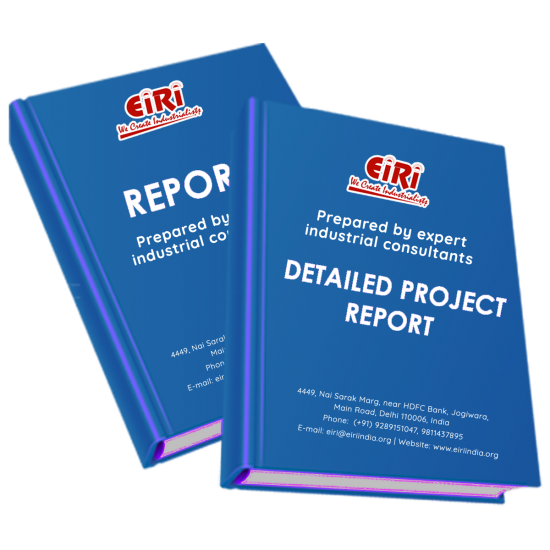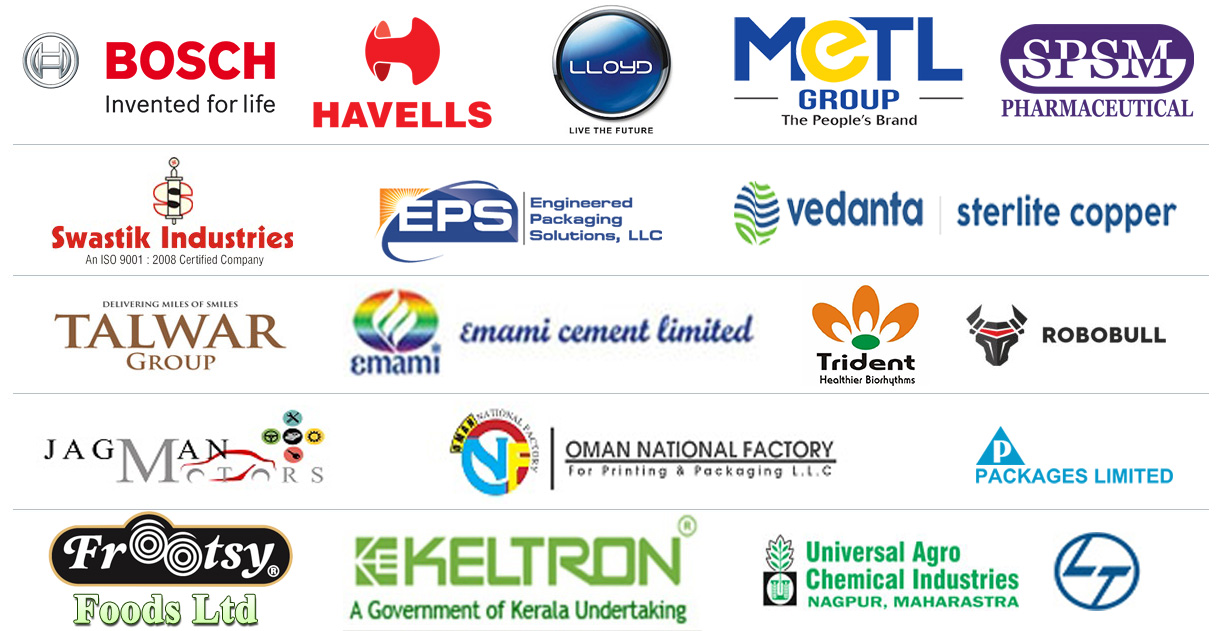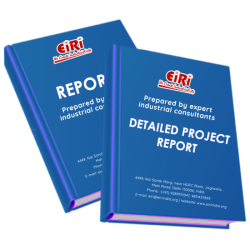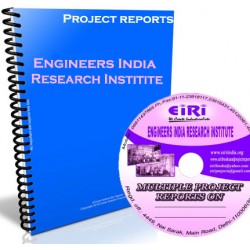Detailed Project Report on Optical Fiber Cable

- More than 40 years of experience
- Managed by expert industrial consultants
- ISO 9001-2015 Certified
- Registered under MSME, UAM No: DL01E0012000
- 24/5 Research Support
Get your quesries resolved from an industry expert. Ask your queries before report or book purchase. - Custom Research Service
Speak to the our consultant to design an exclusive study to serve your research needs. - Quality Assurance
All reports are prepared by highly qualified consultants & verified by a panel of experts. - Information Security
Your personal & confidential information is safe & secure.
OPTICAL FIBER CABLE
[EIRI/EDPR/4260] J.C.: 2435INR, 2435US$
INTRODUCTION
Fiber is hair-thin material made of glass. Generally, optical fiber has a diameter of 125 micrometers (μm), which is actually the diameter of the cladding, or outer reflecting layer. The core, or inner transmitting cylinder, may have a much smaller diameter (sometimes 10 μm). Light rays beam into the fibre within the core through the process of total internal reflection. This can happen for great distances with little attenuation or reduction in density. The degree of attenuation varies according to the wavelength with little attenuation in intensity.
A fiber-optic cable is composed of very thin strands of glass or plastic known as optical fibers; one cable can have as few as two strands or as many as several hundreds of them. These optical fiber cables carry information in the form of data between two places using optical or light-based technology. Once the light beams travel down the optical fiber cable (OFC), they would emerge at the other end. A photoelectric cell will be required to turn the pulses of light back into electrical information the computer could understand.
While travelling down fiber optic cable, light repeatedly off the walls. The beam of light does not leak out of the edges because it hits the glass at really shallow angles. And then it reflects back again as if the glass was really a mirror. This is called total internal reflection. The other factor that keeps it in the pipe is the cable structure.
Fiber offers many advantages, the prime ones being higher bandwidth and reach. Optical fibre cables (OFC) are now preferred over old copper telecom cables as they provide high-speed broadband services. Optical fibre loses 3% of the signal over 100 meters distance while copper wires lose 94%.
Additionally, optical fibres are more long-lasting as compared to copper wires, which are much fragile. Copper wire can be tapped very easily, while optical fibres do not radiate signals that can be tapped. Optical fibre offers much lower latency (the amount of time required to perform data transmission) compared to copper wires.
The Indian optical fiber cable market is gaining traction. The growth is driven by continued investments being made by the Indian government in developing OFC network infrastructure, in various projects. The Indian market for optical fibre cable (OFC) is projected to grow at a CAGR of 17% through 2023.
There has been increased adoption of Fiber-to-the-Home (FTTH) connectivity owing to government initiatives such as Digital India, Smart Cities, or Bharatnet. Moreover, the growing number of data centers in India will fuel this growth further.
The Telecom industry is the primary user of optical fiber technology. The increasing need for 24X7 high-speed connectivity and an increase in data traffic due to services such as voice, messaging emails, downloads, and video streaming.
Indian OFC manufacturers have been making great efforts to meet domestic demand for optic fibre cable. For this, they also need support to ensure sustainable development to the overall economy. In several developed countries, initiatives like tax incentives, substantial project subsidies, financial support for R&D have assisted domestic players to proliferate. The Indian manufacturers have the capability and capacity and they also need a similar kind of support from the government.
The optical fibre cable is classified based on 3 factors – the refractive index, materials used, and mode of propagation of light.
The basis on refractive index OFC is of two types:
• Step Index Fibers:
• It comprises a core enclosed by the cladding, which has a single uniform index of refraction.
• Graded Index Fibers:
• The refractive index of the optical fiber decreases as the radial distance from the fiber axis increases.
Based on materials, OFC is of 2 types:
• Plastic Optical Fibers:
• The poly (methyl methacrylate) is used as a core material for the transmission of light.
• Glass Fibers:
• It consists of extremely fine glass fibers.
Based on the mode of propagation of light, OFC is divided into:
• Single-Mode Fibers: Used for long-distance transmission of signals.
• Multimode Fibers: Used for short-distance transmission of signals.
Difference between multimode and single mode fibre optic cable
Based on product type, the market can be divided into single mode fiber and multi-mode fiber. Single mode fiber allows one type of light mode to be propagated at a time. However, multi-mode fiber cable can propagate multiple modes. Multi-mode optical fiber can be used for short-distance runs, while single mode fiber cable can be used for long-distance applications. Hence, single mode fiber segment is expected to grow much faster during the forecast period owing to their long-distance applications and low installation cost as compared to multi-mode fiber.
Single mode fiber’s core diameter (9 µm) is much smaller than multimode fiber (50 µm and 62.5 µm). It’s typical core diameter is 9 µm. This enables the multimode fiber to have a higher “light-gathering” ability and simplify connections. The cladding diameter of single mode and multimode fiber is 125 µm.
• Why use optic fiber cable?
• They have practically unlimited information
• They have high carrying capacity (very broad bandwidth, THz or Tbits/s)
• They have very low transmission losses (<0.2dB/km, cf1dB/km microwave, 10db/km twisted copper pair)
• They do not dissipate heat
• They are immune to cross-talk and electromagnetic interference
The global optical fiber market was valued at $3,477 million in 2017, and is projected to reach $8,153 million by 2025, growing at a CAGR of 11.6% from 2018 to 2025.
It is intended to prepare a Feasibility Report to install an Optical Fiber Cable production facility with an installed capacity of 300000 Fiber Km / Year as a Brown Field Project.
COST ESTIMATION
Plant Capacity 426.67 Kg./Day
Land & Building Rs. 8.93 Cr
Plant & Machinery Rs. 8.26 Cr
Working Capital for 1 Month Rs. 3.98 Cr
Total Capital Investment Rs. 23.46 Cr
Rate of Return 6%
Break Even Point 88%
CONTENTS
INTRODUCTION
THE BASIS ON REFRACTIVE INDEX OFC IS OF TWO TYPES:
BASED ON MATERIALS, OFC IS OF 2 TYPES:
BASED ON THE MODE OF PROPAGATION OF LIGHT, OFC IS DIVIDED INTO:
DIFFERENCE BETWEEN MULTIMODE AND SINGLE MODE FIBRE OPTIC CABLE
WHY USE OPTIC FIBER CABLE?
USE/APPLICATION/ADVANTAGES
MEDICAL
TELECOMMUNICATIONS
NETWORKING
INDUSTRIAL/COMMERCIAL
DEFENCE/GOVERNMENT
DATA STORAGE
MARKET OVERVIEW
FIBER OPTIC CABLE MARKET, BY REGION, 2020
FIBER OPTIC CABLE MARKET SEGMENT ANALYSIS - BY APPLICATION
FIBER OPTIC CABLE MARKET SEGMENT ANALYSIS - BY FIBER TYPE
FIBER OPTIC CABLE MARKET SEGMENT ANALYSIS - BY GEOGRAPHY
FIBER OPTIC CABLE MARKET DRIVERS
INCREASING APPLICATIONS WITHIN MEDICAL AND AEROSPACE
ADOPTION OF FIBER FOR 5G INFRASTRUCTURE
FIBER OPTIC CABLE MARKET CHALLENGES
ALTERNATIVE WIRELESS CONNECTIVITY SOLUTIONS
MARKET LANDSCAPE
OPTICAL FIBER CABLE - CONCEPTUAL DESIGN
AN OPTICAL FIBER’S SECTIONAL PERSPECTIVE
FIBER SIZE
FIBER TYPES
DESIGN CONSIDERATIONS
FIRST LEVEL OF FIBER PROTECTION
FIBER COUNT
PROTECTION OF OPTICAL FIBERS
INDOOR/OUTDOOR CABLES
OPTICAL FIBER COATING
FIBER OPTIC COATINGS
ACRYLATE FIBER COATING
HIGH-TEMPERATURE ACRYLATE
FLUOROACRYLATE
SILICONE COATING
ACRYLATE COATING
POLYIMIDE
CARBON
POLYETHERETHERKETONE PEEK
POLYBUTYLENE TEREPHTHALATE PBT
POLYPROPYLENE PP
POLYETHYLENE PE
LSZH (LOW-SMOKE, ZERO HALOGEN) PE-PP
POLYVINYLCHLORIDE PVC
POLYVINYLIDENE FLUORIDE PVDF
POLYURETHANE TPU
HALOGEN FREE FLAME RETARDANT POLYURETHANE HFFR
HYTREL® TPE
ETHYLENE TETRAFLUOROETHYLENE ETFE
PERFLUOROALKOXY TEFLON™ PFA
OPTICAL FIBER CABLE JACKET ZIPPERING
RAW MATERIAL
FINISHED PRODUCT DETAILS
THE DETAILS ARE SUMMARIZED BELOW
SPECIFICATIONS (TYPICAL)
FTTH 2 CORE INDOOR FLAT DROP CABLE (FRP)
FEATURES
TECHNICAL SPECIFIATIONS (TYPICAL)
APPLICATIONS
FTTH 4 CORE INDOOR FLAT DROP CABLE (FRP)
FEATURES
TECHNICAL SPECIFICATIONS (TYPICAL)
APPLICATIONS
FIBRE OFC UNARMOURED FRP OPTICAL CABLE
FIBRE UNARMOURED OPTICAL FIBER CABLE
STANDARD AND BIS SPECIFICATIONS
PACKING GUIDELINES
PACKING AND DRUM
PROCESS FLOW SCHEMATIC
PLANT & MACHINERY USED FOR THE PROCESS
MAJOR PRODUCTION LINES
COLOURING
BUFFERING
STRANDING
SHEATHING
FRP
UTILITIES CONSUMPTION (PER MONTH)
QUALITY CONTROL
PLANT EQUIPMENT & RAW MATERIAL SUPPLIER/CONTRACTING COMPANIES
COMPRESSOR
GENERATOR SET (DG SET)
RO/BOILER
SOLAR PLANT
GENERATION AND MANAGEMENT OF WASTES
SOLID WASTES
LIQUID WASTES
GASEOUS EMISSION
OTHERS
INDUSTRIAL WASTE MANAGEMENT
SEWERAGE SYSTEM
SAFETY RULES FOR FIBER OPTICS CABLES
WEAR SAFETY GLASSES
WEAR PROTECTIVE APRONS
AVOID FIBER ENDS
CONTACT LENS WEARERS
KEEP HANDS AWAY FROM FACE
WELL-VENTILATED AREA
NO COMBUSTIBLE MATERIALS
DISPOSE OF SCRAPS
CLEAN UP AFTERWARD
ANTICIPATED ENVIRONMENTAL IMPACTS
CONSTRUCTION PHASE
OPERATION PHASE
MITIGATION MEASURES (PROPOSED)
HEALTH SAFETY & ENVIRONMENT
SAFETY & OCCUPATIONAL MEASURE
(STORAGE/HANDLING OF RAW MATERIAL & PRODUCT)
PROPOSED IMPLEMENTATION SCHEDULE
PROJECT FINANCIALS
BASIS & PRESUMPTIONS (FOR PROFITABILITY WORKINGS)
APPENDIX – A:
01. PLANT ECONOMICS
02. LAND & BUILDING
03. PLANT AND MACHINERY
04. OTHER FIXED ASSESTS
05. FIXED CAPITAL
06. RAW MATERIAL
07. SALARY AND WAGES
08. UTILITIES AND OVERHEADS
09. TOTAL WORKING CAPITAL
10. TOTAL CAPITAL INVESTMENT
11. COST OF PRODUCTION
12. TURN OVER/ANNUM
13. BREAK EVEN POINT
14. RESOURCES FOR FINANCE
15. INSTALMENT PAYABLE IN 5 YEARS
16. DEPRECIATION CHART FOR 5 YEARS
17. PROFIT ANALYSIS FOR 5 YEARS
18. PROJECTED BALANCE SHEET FOR (5 YEARS)
How to Make Project Report?
Detailed Project Report (DPR) includes Present Market Position and Expected Future Demand, Technology, Manufacturing Process, Investment Opportunity, Plant Economics and Project Financials. comprehensive analysis from industry covering detailed reporting and evaluates the position of the industry by providing insights to the SWOT analysis of the industry.
Each report include Plant Capacity, requirement of Land & Building, Plant & Machinery, Flow Sheet Diagram, Raw Materials detail with suppliers list, Total Capital Investment along with detailed calculation on Rate of Return, Break-Even Analysis and Profitability Analysis. The report also provides a birds eye view of the global industry with details on projected market size and then progresses to evaluate the industry in detail.
We can prepare detailed project report on any industry as per your requirement.
We can also modify the project capacity and project cost as per your requirement. If you are planning to start a business, contact us today.
Detailed Project Report (DPR) gives you access to decisive data such as:
- Market growth drivers
- Factors limiting market growth
- Current market trends
- Market structure
- Key highlights
Overview of key market forces propelling and restraining market growth:
- Up-to-date analyses of market trends and technological improvements
- Pin-point analyses of market competition dynamics to offer you a competitive edge major competitors
- An array of graphics, BEP analysis of major industry segments
- Detailed analyses of industry trends
- A well-defined technological growth with an impact-analysis
- A clear understanding of the competitive landscape and key product segments
Need Customized Project Report?
- Ask for FREE project related details with our consultant/industry expert.
- Share your specific research requirements for customized project report.
- Request for due diligence and consumer centric studies.
- Still haven't found what you're looking for? Speak to our Custom Research Team
About Engineers India Research Institute:
Note: We can also prepare project report on any subject based on your requirement and country. If you need, we can modify the project capacity and project cost based on your requirement.
Our Clients

Our Approach
- Our research reports comprehensively cover Indian markets (can be modified as per your country), present investigation, standpoint and gauge for a time of five years*.
- The market conjectures are produced on the premise of optional research and are cross-accepted through associations with the business players
- We use dependable wellsprings of data and databases. What's more, data from such sources is handled by us and incorporated into the report
Why buy EIRI reports?
- Our project reports include detailed analysis that help to get industry Present Market Position and Expected Future Demand.
- Offer real analysis driving variables for the business and most recent business sector patterns in the business
- This report comprehends the present status of the business by clarifying a complete SWOT examination and investigation of the interest supply circumstance
- Report gives investigation and top to bottom money related correlation of real players/competitors
- The report gives gauges of key parameters which foresees the business execution























